
Grey moral choices, overcast skies, and long shadows make me think of fall, and since I’m not a fan of the summer (especially not this summer), I thought I’d review something that reminds me of something a bit more autumnal. Today I’m going to take a dive into Grim Hollow–The Players Guide, a third-party supplement for D&D’s 5e OGL.
This is the second product in the Grim Hollow line, with the third, Grim Hollow–The Monster Grimoire, having just been funded on Kickstarter. This product follows Grim Hollow–The Campaign Guide, which was published last year. Because this follows a pattern like the Dungeon Masters Guide, Players Handbook, and Monster Manual publishing paradigm, it can be difficult to pick one as a vector for review.
Ultimately, I went with The Players Guide because it’s the most likely to be useful to people not playing in the setting, and it’s the book that is most likely to be seen and consumed by more players at the table if the setting is being used.Â
Between the Covers
Grim Hollow–The Players Guide is a 156-page product. This review is based on the PDF version of the book. The PDF contains a full-page map of the setting, an opening page, a credits page, and a table of contents. There is a full-page thank you, a single-page index, and a full-page OGL statement, as well as a full-page image of fashions from the various cultures in the setting.
The layout, artwork, and formatting are on par with any other upper-tier third party D&D publisher, and similar to the official releases. There is full-color artwork, page borders, clearly laid out headers, sub-headers, and sidebars. It is a well-put-together package.
A Quick Note on Inspirations and Artwork
The book has a diverse range of people presented in the book. There are various adventurers that are people of color that appear in the book. I’m very happy to see this, although it’s also worth noting that the nations and fashions are very much rooted in eastern and northern European standards. There isn’t much of a hint of nations beyond the main landmass, and the landmass itself is largely self-contained with all of the European-themed nations.
 Chapter 1: Introduction
Chapter 1: Introduction
Since this isn’t just a list of themed character options, but themed character options for a specific setting, the introduction primes us for the world of Etharis. Etharis is a dark fantasy setting with a lot of horror trappings, but if you are wondering what that means, specifically, this section spells it out.
There are no gods, only the remaining Arch Seraphs and Arch Daemons that inspire or tempt humanity. Magic is either completely outlawed or strictly regulated, depending on where you are. People are generally a little on the paranoid and opportunistic side.
Older, more established nations have fallen, the gods have died, and divine magic is rare. The player characters are likely to be some of the only people fighting back against the darkness, and some of the only people with the powers and abilities that they have.
There is already a lot to cover, but I think it’s important to note the clarity of this being a dark fantasy setting. It’s easy to look at the trappings and see the horror elements, but in general, in a horror setting, survival is the main concern. In dark fantasy stories, heroes can make a difference and do more than survive, but it is usually at a cost – which frames the rest of the options presented herein.
Chapter 2: Exotic Races of Etharis
This section takes its cues from the Player’s Handbook presentation of races (while still using the term, ah well). Since the campaign guide framed how the more commonly known D&D ancestries exist in the setting, this section presents more unique options. These include:
- Wechselkind (Constructed changelings that can appear as human children)
- Laneshi (Aquatic species with twin elements of life and death in their society)
- Ogresh (Wise, powerfully built, solitary species that excels at advising others)
- Downcast (Mortal beings who were once celestials)
- Dreamers (A species that escaped a cataclysm in their past by escaping to their dreams, but now cannot fully remember their past)
- Disembodied (Partially ethereal victims of a magical experiment gone wrong)
There is a very strong feel of “first-generation” 5e design, but that same feel makes the design feel very solid as well. Laneshi and downcast both rely heavily on sub-races to convey their story. Set ability score increases, alignment, languages, and skills are used to define many of the societal traits of these ancestries.
The Laneshi aren’t so much based on an archetype, but have a very strong, unique feel to them for an aquatic race. The subclasses are based on if the character comes from the element of society that deals with life or death. Those that deal with death are likely spellcasters and were born as a twin. One twin is sacrificed and bound to the spellcaster as a spirit guide for the rest of their life. That’s a very specific societal trait, right there.
I really like the concept of playing a now mortal angelic being, and the downcast are probably one of the most portable ancestries in this section because of that. The individual subclasses are tied to the setting’s unique Arch Seraphs, but that’s not a massive hurdle for anyone adapting them.
The disembodied origin has strong Dragon Age vibes. These are survivors of a magical city that attempted to open itself to other planes of existence to tap into greater power, and then disappeared. The disembodied were changed into beings that are partially out of phase with reality, which is probably, on average, better than losing your soul to the Fade and having your body come back to ravage the mortal world.
Overall, I enjoy this chapter. There is a good amount of portability with some of the ancestries, but it also doesn’t shy away from adding setting-specific details to build on for those using the setting.
Chapter 3: Land of Etharis
The next section of the book details the various lands of the setting, including the following:
- The Burach Empire (What’s left of the older empire, with four provinces)
- Ostoya (Haunted nation with a city of undead under it)
- The Valikan Clans (Heavily Nordic region split between raiders and traders)
- The Castinellan Provinces (Nation that’s home to the Arcanist Inquisition)
- The Charneault Kingdom (Nation with a strong Fey influence)
- Morencia (Free trading city-state)
- Liesech (Former prosperous city-state now being slowly wrecked by a plague)
As you may be able to tell from the descriptions or my note at the beginning of the review, there are many eastern and northern European influences in this setting. It also ticks off all of the boxes on the building blocks for a dark fantasy setting, from fallen, corrupt empires, undead haunted regions, and an intolerant inquisition.Â
I like that this is a Player’s Guide that provides a primer for the setting that doesn’t require the player to read the Campaign Guide, but for reasons we’ll get into later, this philosophy doesn’t hold all the way through the design process. I wanted to point out that instead of falling back on using ancestry names and Common for languages, we instead get unique languages for each nation, and sometimes multiple depending on the region within the nation.
 Chapter 4: Magic of Etharis
Chapter 4: Magic of Etharis
Interestingly, this chapter is separated from other topics related to magic. It may be separated because this is setting information, while the later magic chapters are about mechanics, but we started with races, then moved to setting details, and then we’ll move to class information, so we’re doing some thematic weaving here.
Since this is more setting information, this chapter is concerned with explaining the setting information that directly informs spellcasting classes. This means that we get a section on the death of the gods, Arch Seraphs, Arch Daemons, primordial elemental beings, magical colleges, licenses, and regulations.
The lack of gods highlights the idea that while the Arch Seraphs can provide divine magic to the faithful, no god is going to show up to affect wide-scale change to the setting. All the Arch Seraphs embody a particular virtue, with an adjacent Arch Daemon that exists in opposition.
The Primordials remind me of the same setting issues that struck me in 4th Edition D&D. These aren’t gods, but they are the source of nature magic. Gormadraug, the Prismatic Wyrm, is the embodiment of all elements, and serves a function like Jormungandr in Norse folklore, with the other elemental lords binding Gormadraug in place.
One of the things I like about setting up magical regulation is that it’s an easy dial to adjust. You don’t have to always have your player characters on the run if they are magic users, but it’s an available plot hook for them to need to enter a land where their magic is illegal, or where the documentation has been lost.Â
While I don’t generally wonder too much about why the gods don’t make direct changes in a setting, I do like reinforcing the limits of divine intervention as a concept in a dark fantasy setting.
Differences between revering primordials and gods aside, I do like the looming threat of an elemental “World Serpent” escaping its bonds as a heavy shadow hanging over the setting.
Chapter 5: Player Classes
This section introduces a lot of subclasses, all in one way or another themed to dark fantasy or horror. The subclasses include:
- Barbarian
- Path of the Fractured (Separate personalities and skills when raging and when not raging)
- Path of the Primal Spirit (Barbarian with a spirit animal pet)
- Bard
- College of Adventurers (You gain lesser version of other class’ abilities)
- College of Requiems (Add necromantic damage to allies attacks and animate the dead)
- Cleric
- Eldritch Domain (Worship dead gods or things beyond)
- Inquisition Domain (Regulate the danger of magic in the world)
- Druid
- Circle of Blood (Gain access to some Sangromancy spells, leech hit dice from dying creatures, summon blood elementals)
- Circle of Mutation (Gain a pool of mutation points to modify the stat blocks you use in wild shape)
- Fighter
- Bulwark Warrior (Fighter with enhanced protection tank abilities)
- Living Crucible (Fighter that augments their abilities with various alchemical substances)
- Monk
- Way of the Leaden Crown (Inspire others to self-governance by resisting the power of mind control, use pressure points and gain access to various psionic themed spells)
- Way of Pride (Monastic tradition based on inflating your reputation and being impressive)
- Paladin
- Oath of Pestilence (Face and spread death, especially in the form of disease)
- Oath of Zeal (Focus on defeating specific groups or ideologies)
- Ranger
- Green Reaper (Ranger that excels at using and dealing with poison)
- Vermin Lord (Ranger that has vermin swarm pets, does extra necrotic damage, and becomes resistant to disease)
- Rogue
- Highway Rider (Gain quick reactions, find a horse, sneak attack from a horse, and be harder to hit)
- Misfortune Bringer (Bad luck rogue that gets jinx points and different curses they can trigger)
- Sorcerer
- Haunted (Gain sorcerous abilities due to a spirit that haunts you)
- Wretched Bloodline (Gain sorcerous abilities because someone in your family broke a pact with a supernatural being)
- Warlock
- The First Vampire (Gain vampire-like life draining and shape-shifting from your patron)
- The Parasite (Make a pact with a creature that lives in your body, and may let you spit out offspring eventually)
- Wizard
- Plague Doctor (Expend spell slots to heal, creature concoctions that cause conditions, eventually gain resistance to disease)
- Sangromancer (Get special bonuses that interact with the Sangromancy spells in this book)
There is a lot to like in this section, but first I want to summarize some trends. First, like the race chapter, these subclasses don’t default to using some of the more recent subclass “tech,” like uses per proficiency bonus, or using spell slots to supplement per rest abilities. There are also a lot of subclasses that grant you the ability to pick a few abilities from a longer list, which doesn’t feel wrong, but I don’t feel like we’ve seen that as much in 5e.
Several of these subclasses feel like they play with elements traditionally associated with different main classes. That’s not a criticism, I like that kind of thematic expansion. Specifically, fighters using “artificial” means at body enhancement feels like it’s dovetailing with the monk, rogues playing with bad luck dovetails with the warlock, and barbarians with a pet feel like taking on some ranger trappings.
Oddly, while I don’t mind that kind of thematic overlap, I’m not a fan of the College of Adventurers Bard and just getting lesser versions of some of the core classes’ signature abilities. Since they are lesser abilities, they are more of a “fill-in” ability, but it feels like it sits somewhere between “this won’t fully make up for not having that class,” and “but the bard doesn’t really have a personality other than makes up for not having that class.”
The Oath of Pestilence and the Highway Rider both feel like they may be challenging play experiences, especially in the default setting. I’m not sure that the Oath of Pestilence and proving might makes right by surviving disease even works for an anti-hero in a dark fantasy game, and the Highway Rider’s abilities are so specific to being a mounted bandit, it feels tricky to work into an overall adventuring group.
Chapter 6: Transformations
Transformations are an interesting mechanic in this setting, effectively allowing you to have characters that become vampires, lycanthropes, or other afflicted characters, but adding those traits slowly and balancing them with limitations. This is one of those places where I wonder about splitting material between a campaign setting book and a Player’s Guide, because many of the core transformations you would expect to see, like vampires and lycanthropes, have extra options in this book, but don’t present enough material to play them.
For a quick snapshot, there are four Transformation Levels, with a suggested class level range. So, you won’t get Level 4 abilities until you hit 17th level, or at least that’s the general guideline. For each transformation level, you get a boon and a flaw. While there are additional options for different levels for the transformations in the core book, the only ones presented completely in these rules are the Fey, The Primordial, and the Specter. While many of the level 1 flaws may serve as a good balance to these abilities, just from a story perspective, granting one of these transformations might heavily shift the story inertia towards the transformed character.
 Chapter 7: Backgrounds
Chapter 7: Backgrounds
The campaign setting book introduced a new style of background — advanced backgrounds. This section of the book has both the traditional backgrounds, appropriate for the setting, and more advanced backgrounds.
The traditional backgrounds add some features that are more “active,” and mechanically defined than the Player’s Handbook options. By this I mean, they might grant advantage or a reroll under very specific circumstances, a very narrow number of times per day, or other similar mechanics. I like this more solidly designed feature because I feel like people tend to use mechanically defined abilities more than narratively granted setting details.Â
That said, if you ever read the Dungeon Masters Guide on how to create backgrounds, it expressly tells you not to do this, and in this instance, the DMG is wrong. Sorry. Active, well-designed, and mechanically expressed is better than broad narrative position that a player may not be comfortable imposing on the campaign narrative.
I’m less a fan of the advanced backgrounds. I like the concept of advanced backgrounds, i.e., a background that may evolve into something more over time, but the advanced backgrounds in this book almost suggest alternate campaign play that becomes its own narrative.
Advanced backgrounds have ranks, which involve you performing a certain feat to gain that rank, then gaining holdings based on the new rank. Holdings take the form of people that answer to you, territory you control, etc. So your background may let you build a whole background criminal empire, but you need to do a few key important things to trigger the transition from one rank to another.
In addition, you get a profession die tied to the background, and you can pick from a very specific list of situations where you can roll your profession die and add it to your ability check. Even in very limited circumstances, I’m not a big fan of creating situations where you can completely blow out the upper end of the bounded accuracy curve.
All of these advanced backgrounds have a background framework, and then sub-backgrounds. Because of this, the most successful implementation I can see is if you were to have everyone in the campaign take the main background, so it’s easier to work on their individual goals while still participating in the campaign.Â
For example, Clan Members can be Raiders, Shaman, or Tribes Person, and I could see those working together in a campaign a lot more successfully than someone that has Clan Member as a base advanced background, and someone else that has Beggar, which is concerned with managing a city-based gang and criminal racket.
Chapter 8: Archetypes
Archetypes are a semi-mechanical aspect of the game, that introduces your aspirational approach to adventuring. Why are you an adventurer, and what do you want your story to be? This gives over twenty examples of archetypes, as well as what their goals may be.
The semi-mechanical part comes in that each archetype provides an alternate list of ideals and flaws that you can use for your character, in addition to the ones provided by your background.
I like this section, and how it expands options without expanding rules, as well as getting players to think on a meta-level about what they want to accomplish with their characters.
 Chapter 9: Spells
Chapter 9: Spells
There are 42 new spells in this section, and that’s a lot. Many of them are dark fantasy and horror flavored variations of standard spell effects, like damage dealing, and condition creation. Many of them are very story-appropriate for the themes of the campaign setting. But because there are so many new spells, I wanted to focus more on the new category of spells in this book, sangromancy.
The common theme of sangromancy is bloodletting. In many cases, this means that a character will spend a hit die as part of casting the spell, and often rolls that hit die to determine the effect that spell will have. For example, you might cause a creature to take that hit dice worth of damage every round until the spell is finished whenever their turn starts.
As you might expect, the Circle of Blood and Sangromancer subclasses earlier in the book have features that interact with this type of magic, for example, providing a few extra hit dice to “burn” than a “dabbler” might have.
I like this addition to the rules, and for some reason, blood magic always has this visceral feel to it, like it’s a borderline forbidden tradition that creates strong setting elements. That said, it is a little difficult to judge the effectiveness of these spells against existing spells, because nothing really uses hit dice as a resource outside of resting and healing. I would still love to see some of these in play.
Chapter 10: Advanced Weapons
Advanced weapons rely on new weapon traits that are introduced and can only be used if a character has advanced weapon training. A character has advanced weapon training if they are 3rd level or higher and have proficiency with martial weapons.
Traits include things like armor-piercing, which adds +1 to hit against armored foes, momentum, which does extra damage after moving in a straight line, and brutal, which adds an extra damage die whenever you roll a critical hit with the weapon. In addition to these traits, there are also traits like tripping and disarming weapons.
I constantly live in a place where I want more weapons in D&D 5e, and where I don’t want weapons to get as complicated as they were in D&D 3.5. I feel like this is pushing a bit towards the latter. I’m not a fan of small, fiddly bonuses, but I don’t mind having certain circumstances where a weapon does a higher die of damage, for instance.
I’m also not sure why the advanced weapon training rules were added to this. Many of these weapons are expensive enough that characters probably won’t be able to afford them until 3rd level, at any rate, and I’m not sure that their extra characteristics will be life or death deal-breakers even if someone has one of these at 1st level. The main conundrum that these rules serve to solve is to establish that black powder weapons require advanced weapon training.
Chapter 11: Magic Items
The majority of this section are special items that are specifically useful to people with transformations, and often require attunement by someone with a specific transformation. As such, there are Aberrant Horror, Fey, Fiend, Lich, Lycanthrope, Primordial, Seraph, Specter, and Vampire items. In many cases, these enhance existing abilities or help to mitigate specific weaknesses that individuals with these transformations might have.
There are also a handful of magic items not tied to transformations, as well as a Grim Hollow Trinket Table. I’m a big fan of setting-specific trinkets, as I think they can subtly convey a lot about the setting details and the tone of the campaign.
 Chapter 12: Party Inspiration and Corruption
Chapter 12: Party Inspiration and Corruption
This introduces two pools of dice, one for the players and one for the GM, that can be used to model the ebb and flow of fate.
A character might spend one to add 1d6 to a saving throw, or two of them to make a death save. Characters may spend a die and roll it, multiply it, and determine equipment that they just happen to have brought along. All six can be spent to have a round of the whole party attacking with advantage against opponents who are all vulnerable to their attacks.
The GM can spend the opposite pool to start an affliction such as a curse or a Transformation, boost a creature’s attack roll or hit points, or potentially inflict a failed death save on a player. All six in the pool can be spent to cause a major campaign villain to appear in the scene.
I love GM currency, and narrative currency, but I struggle with adding them to D&D, since there are already so many currencies to track in the game. I’m not saying you shouldn’t, I’m just saying there is already a lot going on in that regard. That said, wow, I would not spend a GM resource to potentially give a PC a failed death save. That feels very adversarial to me. Also, compared to hero points in the DMG, it’s expensive to make a death save on the hero side.
Chapter 13: Session Zero
This is my favorite part of the whole book. More discussion of safety tools, session zero, and campaign expectations in all D&D books, across the board!
This section is four pages long, and covers setting expectations, discussing tone and theme of the campaign, setting boundaries, using in-game safety tools, agreeing on party composition, and scheduling.Â
Not only do we get a discussion of safety, but we also get a section on what to do if you mess up in your implementation of safety. There are links to other sources that have discussed these issues in other venues. I appreciate this, because while I think a summary of these discussions is important to include, introducing players to a wider discussion of the topics is also important for normalizing such content.Â
A Light In the Darkness The section on Session Zero is much appreciated and well done, and I hope it can serve as a model of how to include this style of material in other 5e OGL work.Â
While the setting does appear to have similar elements to other existing, published settings, there are several subtle but substantial setting elements that distinguish the setting. Many solid options work both in the context of the setting, as well as for use outside of the setting. Some of the strongest “cross setting” material includes some of the ancestries, many of the subclasses, and the new magic subtype. The section on Session Zero is much appreciated and well done, and I hope it can serve as a model of how to include this style of material in other 5e OGL work.Â
Extinguished Lights
Transformations are interesting, but some of the most “traditional” concepts represented by transformations are only detailed in the campaign guide, and not repeated in this section. The advanced backgrounds also contain material first introduced in the campaign guide, but share the same issue with that material, where it very specifically pulls characters in a specific “second life” outside of adventuring. The advanced weapons section is yet another concept introduced in the campaign guide, which introduces new weapon qualities and special rules for more granular weapon proficiency, but I’m not sure that we needed the secondary rules surrounding proficiency, outside of new weapon qualities.Â
Qualified Recommendation–A product with lots of positive aspects, but buyers may want to understand the context of the product and what it contains before moving it ahead of other purchases.
If you want more optional rules and elements to add to your D&D 5e game, this book will give you lots of options, some stronger and better able to be used across settings than others. If you want a dark fantasy setting, it has some strong recommendations for it, although it’s definitely competing with some stiff competition in both the horror and dark fantasy genres.
What genre tropes do you identify as being common to both horror and dark fantasy? What are your favorite settings that blend the two? What is really needed in a setting or a ruleset to distinguish dark fantasy from heroic fantasy? We want to hear from you in the comments below!







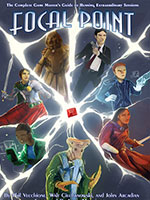
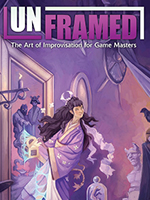

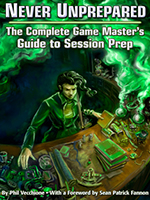
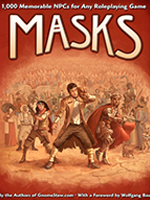
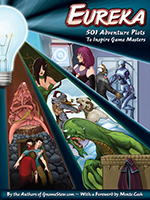

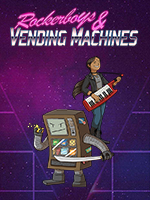
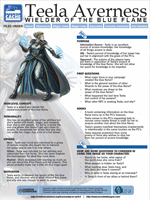
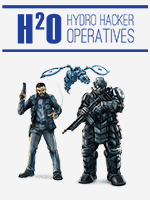
It has a lot of similarities with Warhammer Fantasy Role-playing which, in my opinion, really isn’t a bad thing. I have backed everything they have released so far and I’m currently writing up a campaign with the information we currently have.
I like the idea of the cheer system as this opens up so many different opportunities for the individuals as well as the party as a whole. The Bleak and lack of hope that can be implemented from the get go makes a pleasant change to most of the other settings.
This will be the first time my gaming group will have sat round a table to throw non virtual dice and what a setting to start off with.